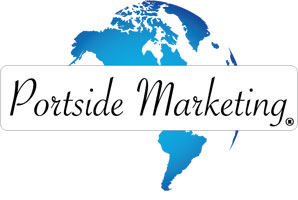Psychology of Web Design shows how colors, fonts, and spacing influence your customers’ moods. Many people don’t realize that good looking content is only part of the overall big picture that is your website. A certain look can generate positive feelings from visitors and this can lead to more sales.
The experts at Portside Marketing understand the psychology behind effective websites. We can help you use this information to create a website that helps you meet your business goals. The first step to improving your website is understanding how different design elements affect your website visitors.
Applying the Psychology of Web Design to Your Elements
Design elements affect the mood and experience that visitors get from your website. There are four major elements that have the biggest impact on your visitors. Using these elements to your advantage can help generate the desired response from your website’s visitors.
The Psychology of Web Design in Content
Content is the meat and potatoes of your website. It draws your readers in and gets them what they need quickly and efficiently. Your content should be edited into reasonable chunks and sensibly organized. This allows your visitors to quickly find the information they need without overwhelming them. Organized content makes people happy and increases the likelihood that they’ll return to your website in the future. When your content is overwhelming or poorly organized then it can have the opposite effect. People are less likely to return to your website if they can’t find what they’re looking for easily. This is why you should avoid hiding content or providing too much content at once. Content needs to be clean, easy to read, concise, professional, and organized.
The Importance of Space
Many companies feel that every area of their web page should have something. However, this is often counterproductive. Most people like to see plenty of “white space” on your website. White space refers to an area without content or images. The lack of information is often just as important as the information itself. Consider it a resting place for those who are on a journey through your website.
Too much information with inadequate white space can feel very chaotic and overwhelming. There’s no place for their eyes to rest as they trek through information. Rather than cramming images and information together, focus on providing important information effectively and allowing for white space. Your visitors will feel like your website is more professional and better organized. This makes them happy. It also shows your visitors that you want to give them the most important information without wasting their time.
The Psychological Effects of Color
Color is also extremely important in helping guide your visitors to a specific emotion. Most companies have a few main colors combined with neutral colors. For example, if your company has your main colors as red and yellow with your neutral color being white, then it’s more likely the background will be white instead of red or yellow. The neutral color plays the same roll that the white space does. It provides a much needed break for the eyes of your visitors. Without the neutral colors your sight would be too bright and colorful to look at, especially for longer periods of time.
Specific color groups also are associated with certain feelings. For example, cool colors such as greens, blues, and purples tend to create a relaxed and inviting feeling. Warmer colors such as oranges, yellows, and reds are often soothing. Whites create feelings of openness, grays appear modern and clean, and blacks can be professional. However, all of these colors can also create negative feelings depending on the extent of their use. Everything should be used in moderation. It’s also important to select colors that complement each other to provide visual harmony throughout your website.
Influencing Feelings through Fonts
The fonts you select for your website convey various emotions for your visitors. Thousands of fonts are available with more being created all the time. However, it’s very important that you choose wisely. Serif fonts are often associate to professionalism and seriousness, while san-serif fonts feel more modern and informal. News websites tend to favor serif fonts to help convey knowledge and importance. San-serif fonts are found more often in the technology industry to offer up feelings of being modern.
Selecting a font is only half the battle. It’s also important to display your fonts in a way that encourages the desired emotions. Large leading makes the content feel lighter and easier to read. It also offers more white space which is pleasing to visitors. If you have little space between the lines then the content can feel crowded and difficult to read. Likewise, the space between paragraphs, margins, and between other elements is also important.
Using the Psychology of Web Design to Your Benefit
Web designers such as Portside Marketing have a deep understanding of how to use psychology in the web design for their clients. These same thoughts can also be used for logo design as well as print design. Consider all of these elements when creating your company image.



